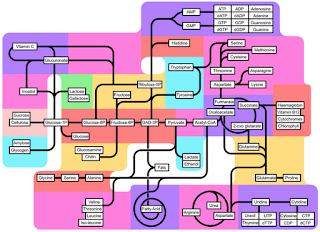Jesus says we are his body here in the world. He is alive so his body is also alive. We are to do the things he did (and even greater things). We are to say the things he said. We are alive, not just as individuals but as his body expressing his love, his wisdom, his authority.We are not just able to express love, wisdom and authority individually, but communally. It is not enough that you and I express our own love. It is not even enough that we individually express Christ's love.
The mystery is that the church herself, the Bride of Christ, is also able in her own right to express Christ's love. We are not a bunch of loosely associated individuals, we are Christ's Bride.
I am deeply troubled that the Bride is fragmented and damaged. So many different forms of church management and government compete for our loyalty. Differences in doctrine, in faith, and in tradition are everywhere.
So let's take one of the many ways of understanding church and see if we can usefully extend it.
Church Multiplication Associates considers that church life, like biological life, depends on its DNA. The idea is that her DNA determines the nature of church, in particular how she is structured, functions and expresses herself. See Neil Cole's article '
What is at the heart of the organic church movement?'
Controlling DNA - Taking this a little further we might recognise that a living organism is more than the product of its DNA. There are subtle factors at work controlling how and when that DNA is expressed. For example these factors are responsible for the fact that babies in the womb do not develop ears on their legs. Every cell in the body contains the full set of instructions, but cells only act on a subset of the DNA.
It's the same in the church, we all have the same DNA which is the nature of Christ, and we all partake of that one nature. Yet we are not, as Paul points out, all ears. Why not?
The Holy Spirit - One factor I can identify immediately is the prompting of the Holy Spirit in the moment. How I behave is controlled, not simply by the DNA, but also by what I am hearing at this present moment. The DNA is not diffused throughout the entire body. Every cell, whatever its function, has a full set of DNA while only using a subset.
Perhaps we should not expect every member of Christ to express all of the DNA. Or, even
more significantly, perhaps we should not expect
any member of Christ to express all of the DNA!
Instead, perhaps we should expect that particular parts of the DNA will be expressed by particular individuals at particular times for particular purposes, and that each individual will do so based on constant communication with the Holy Spirit.
The environment - Another important factor in living systems is the environment. The expression of DNA is affected by the environment. For a simple example consider the effect of sunshine on human skin. Too much sun causes damage - burning in the short term and perhaps skin cancer in the longer term. Melanocyte cells in the lower epidermis respond to exposure by creating increased amounts of a dark pigment called melanin. The DNA contains the instructions for making melanin, but the environment determines when and how much it is expressed by skin cells.
In the church, one such factor of the environment is persecution. The persecuted church is different from the unpersecuted church.
Prompting by the Spirit and environment both affect the appearance and behaviour of the church. We should not overlook these factors.
Can you think of other factors that might control the expression of the the church's DNA?




